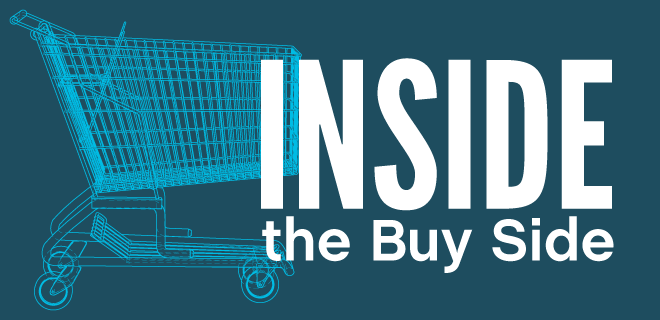
Live sports and machine learning are rewriting the playbook for CTV ad yield, blending bundling strategies with dynamic pricing to maximize revenue and minimize waste.
As audiences are continuing to shift to CTV, advertising budgets are following suit, with CTV ad spend expected to increase by 13.3% this year. Faced with mounting pressure to drive profitability, media companies are continuing to roll out their ad supported offerings, but most are still trying to get the balance right. This uncertainty is resulting in fluctuating CPMs and increased costs to subscription customers.
As the landscape evolves, profitability continues to be the North Star for broadcasters and media owners in the ongoing streaming war. Advertising has proven to be a lucrative revenue driver for tech platforms who’ve figured out how to optimize their yield while legacy content owners play catch up.
Live sports events have emerged as a critical addition to capture more viewers, serving as a potent catalyst for improving CTV revenue. However, the question of whether bundling or market-based pricing can drive optimal yield is still largely unanswered. (Punchline: the answer is both.) Here’s a closer look at why live sports events are crucial for better CTV yield and how the integration of machine learning can transform the advertising landscape.
The Role of Live Sports Events in Ad Bundling
Live sports events have always been a cornerstone of TV programming due to their real-time nature and unparalleled viewer engagement. Live sports events create a sense of immediacy and exclusivity that drives high levels of viewer attention – and value for the content owner. This value translates into a strong demand from advertisers who are willing to pay premium rates for the opportunity to reach highly engaged audiences.
Traditionally, premium sports events command top dollar in advertising deals, and the same has held true as more of that content has become available on streaming services. In fact, 39% of U.S. adult consumers cited a preference for streaming services over linear TV (23%) for Big Game viewing in our recent study.
Following traditional sales strategies, media companies in the CTV space are bundling premium content with other content to maximize revenue. For example, a broadcaster might offer ad spots during a high-profile NFL game but require advertisers to also purchase spots during reruns or reality TV shows. This approach ensures high revenue for the premium content but the fundamental question of the actual market value for an individual impression remains unanswered.
This bundling strategy, while effective in driving initial revenue, doesn’t accurately portray the unique value of each user consuming each piece of content. Advertisers are often paying for a package that includes content they may not value as highly, leading to a potential mismatch between the cost of the ad space and the actual value delivered. As a result, advertisers are knowingly buying waste and broadcasters are unable to optimize yield across their entire inventory.
Enhancing CTV Yield with Machine Learning
The key to unlocking better yield from this inventory lies in advanced technologies like machine learning (ML), that offer a sophisticated approach to pricing and targeting ads. ML algorithms can analyze a multitude of factors—including viewer behavior, content type, time of day, and device used—to accurately price advertising impressions in real-time. As a reference point, the average CTV campaign makes a binary decision – is this user in my target audience or not – before serving an ad.
On the other hand, ML-powered ad decisions leverage more than one million data points as part of their decision making process. This dynamic pricing capability allows buyers to align the decision to buy an ad with the likelihood of an ad generating a profitable outcome. Additionally, media owners can align their ad rates more closely with the actual value delivered to advertisers instead of relying on fixed CPMs established during upfront negotiations. Initial testing suggests a 4-7x improvement in the number of impressions required to deliver an outcome. In other words, by leveraging ML, media owners can free up 80% of the inventory that is currently being wasted.
The integration of ML into ad pricing represents a significant shift from traditional methods. While the upfront model of selling advertising space has been a staple of the industry, ML offers a more nuanced and dynamic approach. By accurately predicting the value of each impression and understanding the likelihood of action, media owners can move beyond fixed rates and explore new revenue opportunities. The key to success is finding the right balance. If bundling is yielding a higher price for lower quality content, sell it as a bundle. But be sure you have the full picture about the value of the inventory before making that decision. This is how YouTube, Instagram, Facebook and Amazon all price their inventory.
The Home Stretch
With the recent success of Amazon’s Thursday night football programming, we can see that this shift is already working well. Live sports events provide an open field for experimentation to drive improved yield, enabling content owners to unlock the full potential of their inventory and optimize revenue across their entire portfolio. The right approach given the transitional state of our market is to deploy these ML systems where you see lower yield. Unfilled inventory, content where you’ve seen CPM declines or serving advertisers who are incredibly performance sensitive are all great places to start. But how many of us really know the individual value of an impression at the moment it’s about to be served? It’s time for content owners to draft a new playbook for monetizing ad inventory and capture greater value for advertisers.